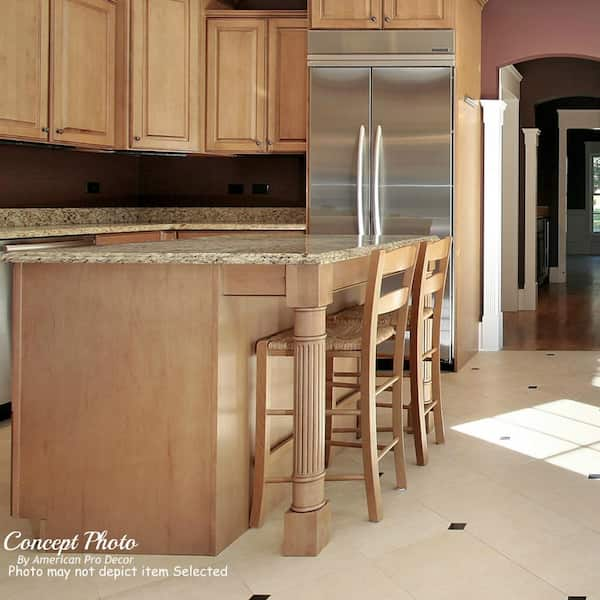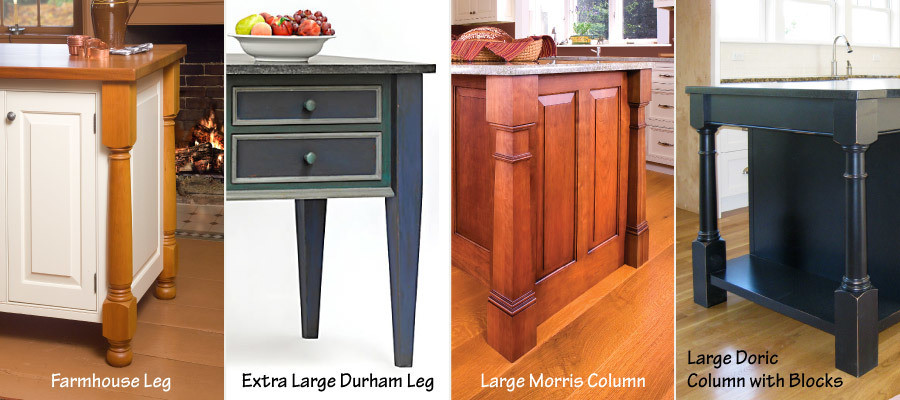A Guide to Picking the Ideal Cooking Area Island for Your Home
Understanding your kitchen's spatial characteristics is the preliminary step, ensuring that the island fits flawlessly without interfering with the circulation. The selection of materials and coatings likewise plays an essential function in integrating the island with your kitchen's total style.
Analyzing Your Room
Before choosing a kitchen area island, it is important to thoroughly analyze your room to guarantee the addition will certainly be both useful and cosmetically pleasing. Begin by gauging the readily available location, consisting of the width, size, and height of the kitchen area. Exact measurements are vital to prevent buying an island that bewilders the area or one that is disproportionately tiny.
Take into consideration the existing design and just how the island will certainly incorporate with the existing traffic circulation. A well-placed island should not restrain or obstruct pathways access to important appliances, such as the refrigerator, sink, and cooktop. Leave appropriate clearance space-- typically around 36 to 48 inches on all sides-- to enable comfortable motion and office performance.
Next, examine the all-natural light and sightlines within your cooking area. An island that obstructs a window or disrupts aesthetic cohesion can make the space feel cramped and dark. Consider how the island's placement will certainly impact lighting and exposure, ensuring it boosts instead of interferes with the kitchen's setting.
Identifying the Objective
Establishing the purpose of your cooking area island is an important action in guaranteeing it meets your certain demands and choices. Prior to delving right into design or dimension considerations, it is necessary to clarify what key feature the island will serve in your kitchen. Will it be a main center for dish prep work, a laid-back eating area, or possibly an extra storage service?
For those who appreciate cooking, incorporating home appliances such as a cooktop or sink may be essential. Additionally, sufficient counter area for cutting and blending, together with obtainable storage space for cooking area devices and ingredients, can transform the island into an efficient workstation. On the other hand, if the island is meant to offer or assist in social communications as an eating location, seating plans become vital. In this case, making certain sufficient legroom and area for comfortable eating experiences is vital.

Picking the Right Dimension
Choosing the ideal size for your kitchen area island is a balance of functionality and space optimization. An ideal kitchen island should give sufficient work area while guaranteeing that activity around the kitchen stays unblocked. Begin by gauging your kitchen area room; a minimum clearance of 36 to 42 inches around the island is required to allow for comfy activity and access.
The dimensions of the island must reflect its intended use. If the island will certainly offer mainly as a prep area, a size of 24 to 36 inches could be adequate.

Lastly, make certain that the island's dimension complements the total kitchen layout, staying clear of any type of overwhelming existence that could interfere with the kitchen's visual and utility - kitchen island legs. Cautious planning and specific dimensions will assist you achieve a unified and efficient kitchen area setting
Deciding On Products and Finishes
After figuring out the appropriate size for your cooking area island, the next action entails selecting ideal materials and surfaces. The selection of materials significantly affects you can try these out both the visual charm and capability of your kitchen area island. Popular products for counter tops consist of granite, quartz, and butcher block, each offering unique benefits. Granite, understood for its resilience and classic elegance, is very resistant to scrapes and heat. Quartz, a crafted rock, provides a non-porous surface that resists bacteria and stains. Butcher block, made from wood, adds a warm, rustic beauty and is optimal for food prep work.
Along with the kitchen counter, take into consideration the products for the island base. Solid wood provides a traditional, durable appearance, while stainless steel provides a sleek, modern look and is easy to clean. Painted finishes can introduce a dash of color, with alternatives varying from low-key pastels to vibrant, dynamic shades.
When choosing finishes, ensure they complement the total cooking area layout. Matte surfaces offer a contemporary feel, while glossy surfaces can create a polished, high-end appearance. Take note of the longevity of coatings, particularly in high-traffic locations, to preserve the island's look gradually. Picking the ideal materials and coatings will boost both the performance and visual appeal of your kitchen island.
Including Practical Attributes
Incorporating useful features right into your kitchen island can substantially enhance its utility and ease, look at here transforming it into a functional centerpiece of your cooking area. One vital attribute to think about is additional storage. Incorporating cabinets, cabinets, and open shelving can provide much-needed area for cookware, utensils, and small devices, assisting to keep a clutter-free environment.
One more useful enhancement is a built-in sink or cooktop, which can improve dish prep work and clean-up processes. A sink can help with jobs such as cleaning veggies and cleaning meals, while a cooktop can permit cooking directly on the island, cultivating an extra interactive and social cooking experience.
Think about including seating alternatives, specifically if your kitchen doubles as an informal eating area. Bar feceses or built-in benches can transform the island into a multifunctional area for meals, research, or laid-back gatherings.
Last but not least, integrating electric outlets into your cooking area island can improve its functionality. Electrical outlets provide hassle-free accessibility for tiny kitchen devices, charging terminals for electronic devices, and extra illumination alternatives.
Verdict

Before choosing a kitchen area island, it is necessary to completely analyze your area to make sure the addition will certainly be both useful and aesthetically pleasing.Choosing the ideal size for your kitchen island is a balance of functionality and area optimization. kitchen island legs. An excellent kitchen island ought to offer ample office while making sure that activity around the kitchen area continues to be unobstructed.Incorporating practical functions right into your kitchen area island can dramatically boost its energy and comfort, transforming it right into a functional centerpiece of your kitchen.In verdict, selecting the excellent kitchen island necessitates a complete evaluation of the available area, quality concerning its primary feature, and cautious factor to consider of the appropriate dimension and materials